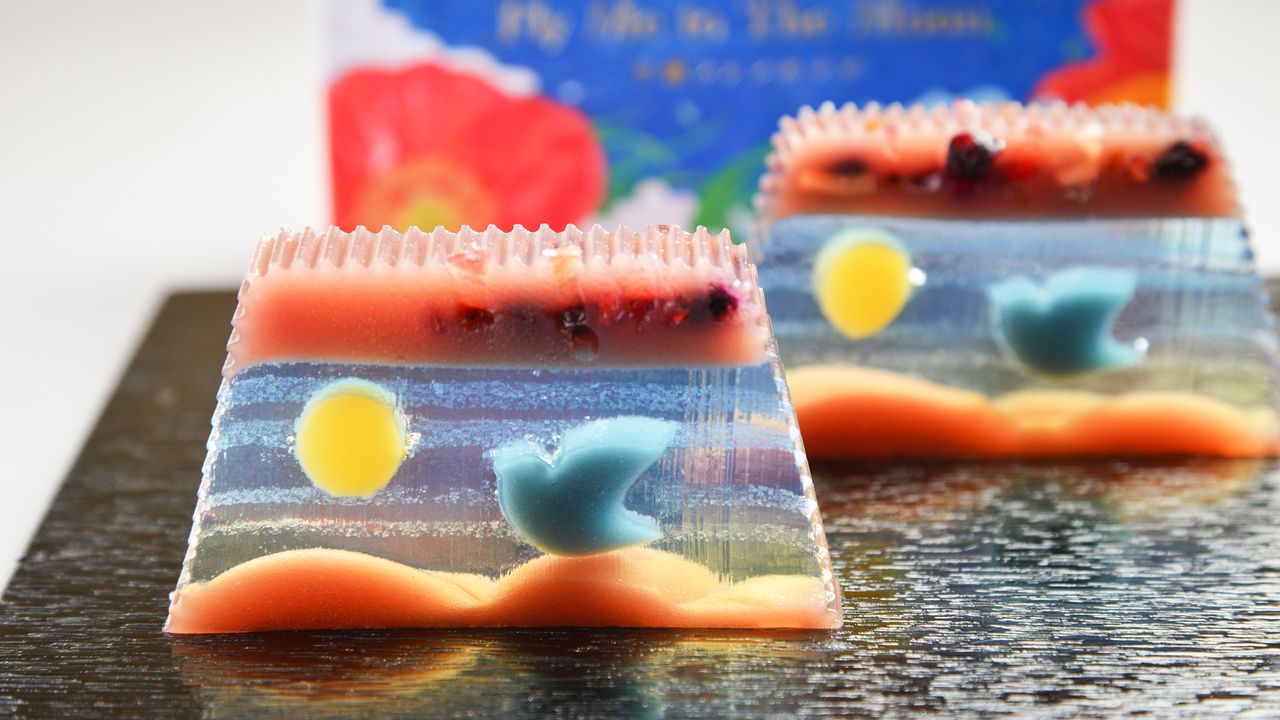
Sweets from the North: Four Tōhoku Confectioners Balancing Tradition and Innovation
Guideto Japan
Food and Drink- English
- 日本語
- 简体字
- 繁體字
- Français
- Español
- العربية
- Русский
Soaring Yōkan
Aizu Nagatoya, a sweets maker in the city of Aizuwakamatsu in Fukushima Prefecture, first opened its doors in 1848. In those days, jōgashi, refined sweets made with white sugar, were enjoyed only by the upper classes. The story goes, though, that the lord of the prominent Aizu domain longed to bring confections to commoners in the province. Inspired by the daimyō’s aspirations, a local sake brewer took up the confectionery arts and opened Nagatoya. Early on, the shop primarily made inexpensive confections from waste rice, millet, or beans sweetened with an unrefined dark sugar called kokutō, glutenous mochi rice, or sweet potato starch. Today, Nagatoya continues this tradition of making reasonably priced treats for locals.
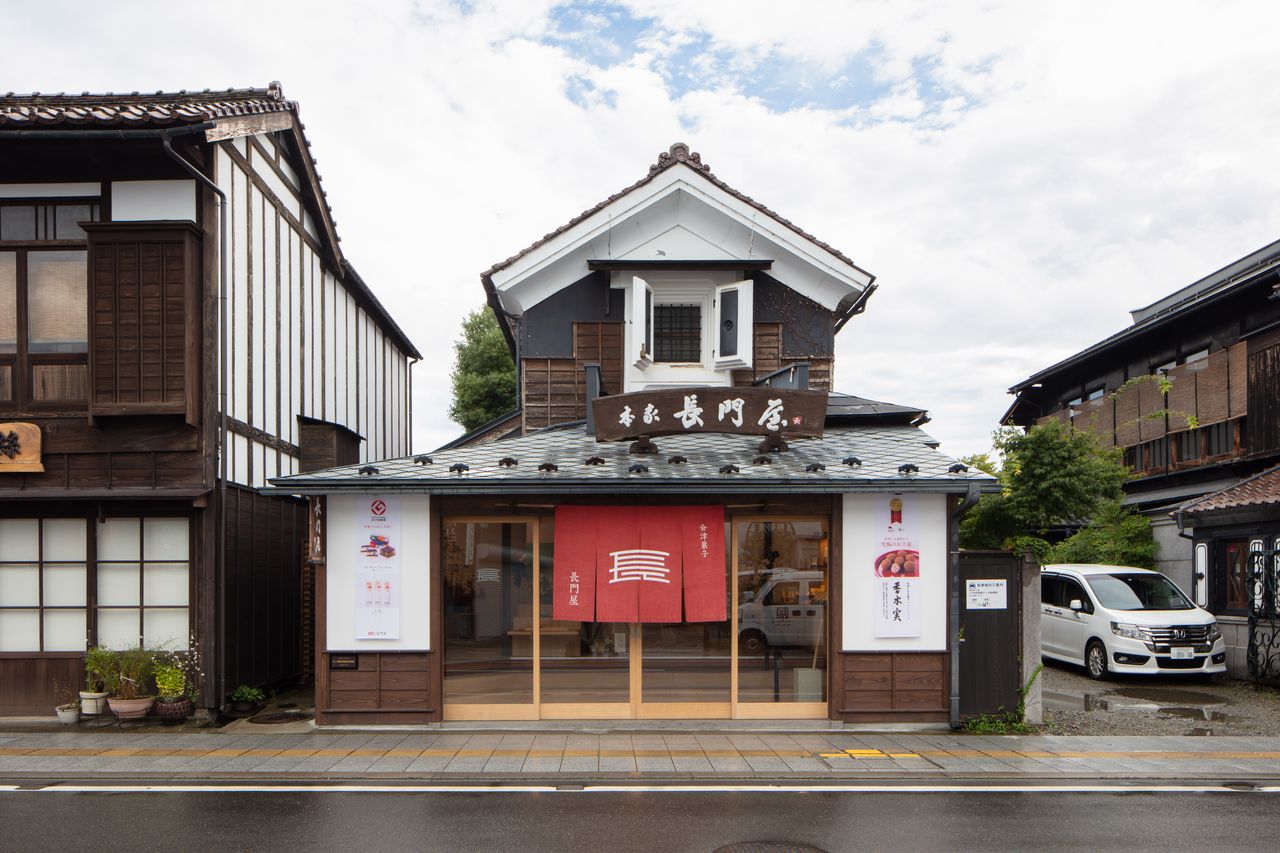
Nagatoya’s Nanokamachi shop has an old fashioned exterior. (© Aizu Nagatoya)
Over the years, Nagatoya expanded its selection to include more substantial fare like snack breads, but remained focused on traditional, hand-made treats, adapting these to reflect modern tastes. More recently, the shop has drawn attention for its series of redesigned traditional sweets launched after the 2011 Great East Japan Earthquake.
Rumors sparked by the accident at the Fukushima Daiichi Nuclear Power Station damaged sales of food products from Fukushima Prefecture, including Nagatoya’s confections, a situation that put the future of the business in doubt. A strong showing of support from loyal customers, however, helped the owner through this bleak period. Hearing stories of how the shop’s sweets brought back good memories and other words of encouragement reminded the proprietor of Nagatoya’s long connection to locals, many of whom had grown up eating the shop’s snacks. Realizing the importance of continuing that history, the owner resolved to try more creative means to return the business to health. This meant adapting to the modern age while maintaining traditional flavors and techniques.
One result of this new approach is Fly Me To the Moon, released in 2017. Inspired by the eponymously titled jazz song, this confection is created with yōkan, a jelly-like sweet made of beans, agar, and sugar. Traditional wagashi confections are often named in reference to ancient seasonal poems or songs, but the aim of paying homage to a famous jazz tune is to use the confection to tell a story that anyone, no matter their background, can understand.
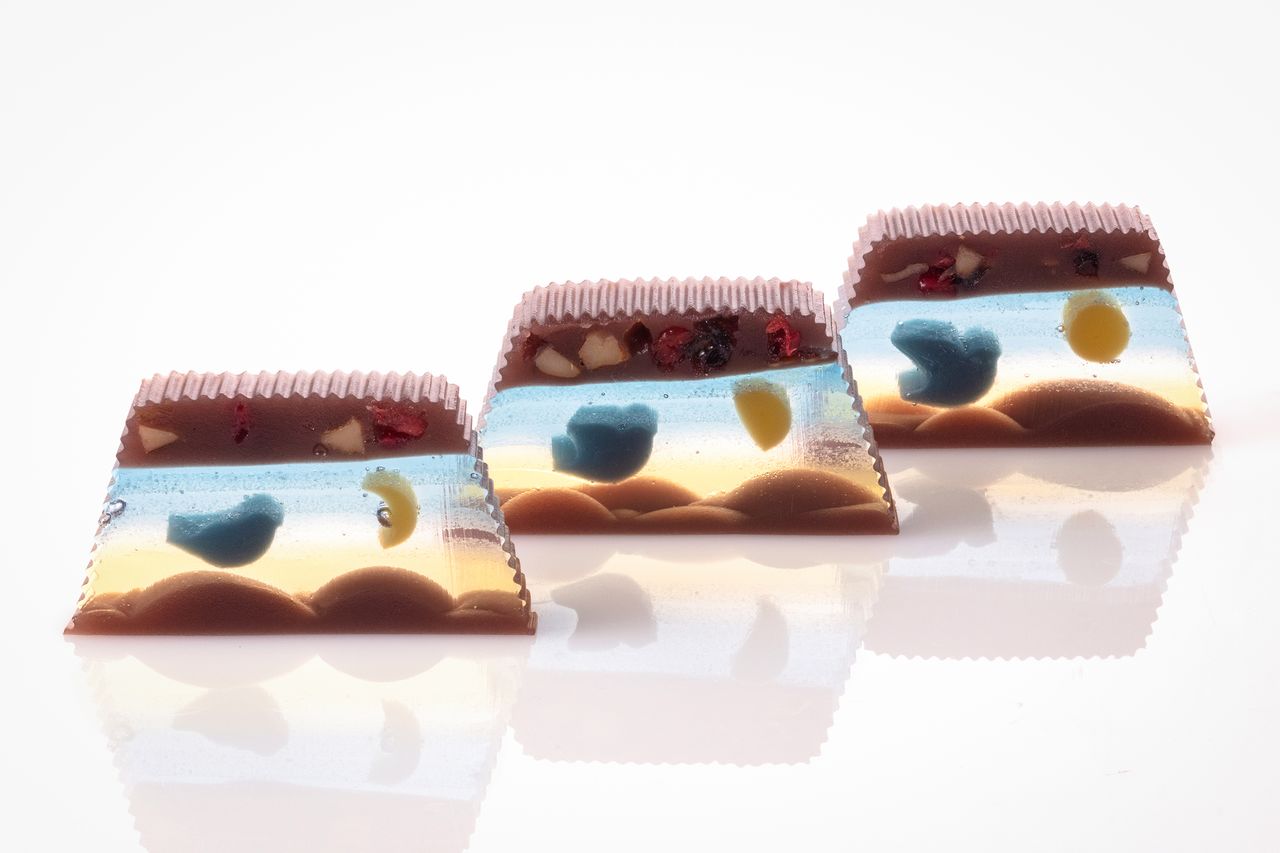
The story-telling treat, Fly Me To The Moon Yōkan Fantasia, sells for ¥3,500. (© Aizu Nagatoya)
Slicing into the 10-centimeter long yōkan reveals a stop-motion story of a blue bird flying to the moon. With each cut, the angle of the bluebird’s wings move subtly and the phase of the moon changes, showing the bird flying to the moon like a flip-book. The moon and bluebird have a mild lemon flavor, while the mountains of Aizu are made from aromatic adzuki bean paste. The night sky is made of clear kingyokukan, a decorative jelly made from agar and sugar, and the glittering golden mist is champagne flavored. With its raisin and cranberry topping, it goes well with Japanese tea, black tea, or wine.
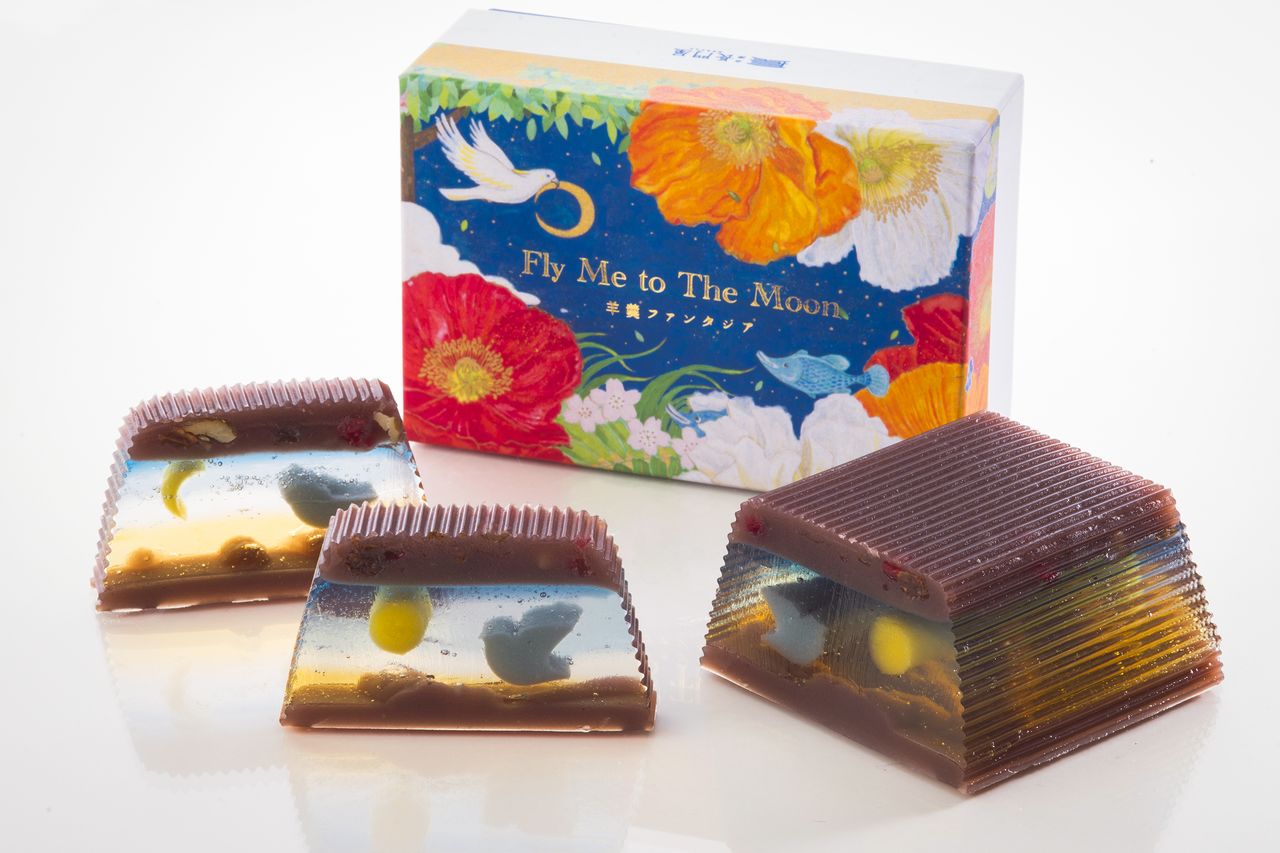
The package also features an elegant drawing of the moon and bird. (© Aizu Nagatoya)
Aizu Nagatoya Nanokamachi Shop
- Address: Nanokamachi 3-30, Aizuwakamatsu, Fukushima Prefecture
- Tel.: 0242-29-7070
- Link (some English): https://nagatoya.net/?mode=f7
- Hours: 9:00 am–5:30 pm
- Closed Year End/New Year Holidays
- Located a short walk from Nanukamachi Station on the JR Tadami Line
Sour Apricot Meets Creamy Ganache
The Dewa Sanzan pilgrimage in Yamagata Prefecture is a hike over the three sacred mountains of Haguro, Gassan, and Yudono. Many of the pilgrims on that journey try the local specialty noshiume, a chewy treat made with sour apricots. Noshiume has become a common sight at souvenir shops nationwide, but Noshiume Honpo Satōya in Yamagata is the original maker.
The shop was founded in 1821 by Satō Matsubei, the son of a local medical family. Satō created a hand-crafted sweet he named noshiume based on his family’s technique for a type of restorative medicine made from boiled ume that was common in the Edo period (1603–1868). Various changes were made to the recipe over the years and the confection appeared in its current form around 1870. Noshiume is made by drying umeyōkan, a kind of jellied sweet made with ripe Yamagata-grown ume. Its petite size and long shelf like make it a popular souvenir.
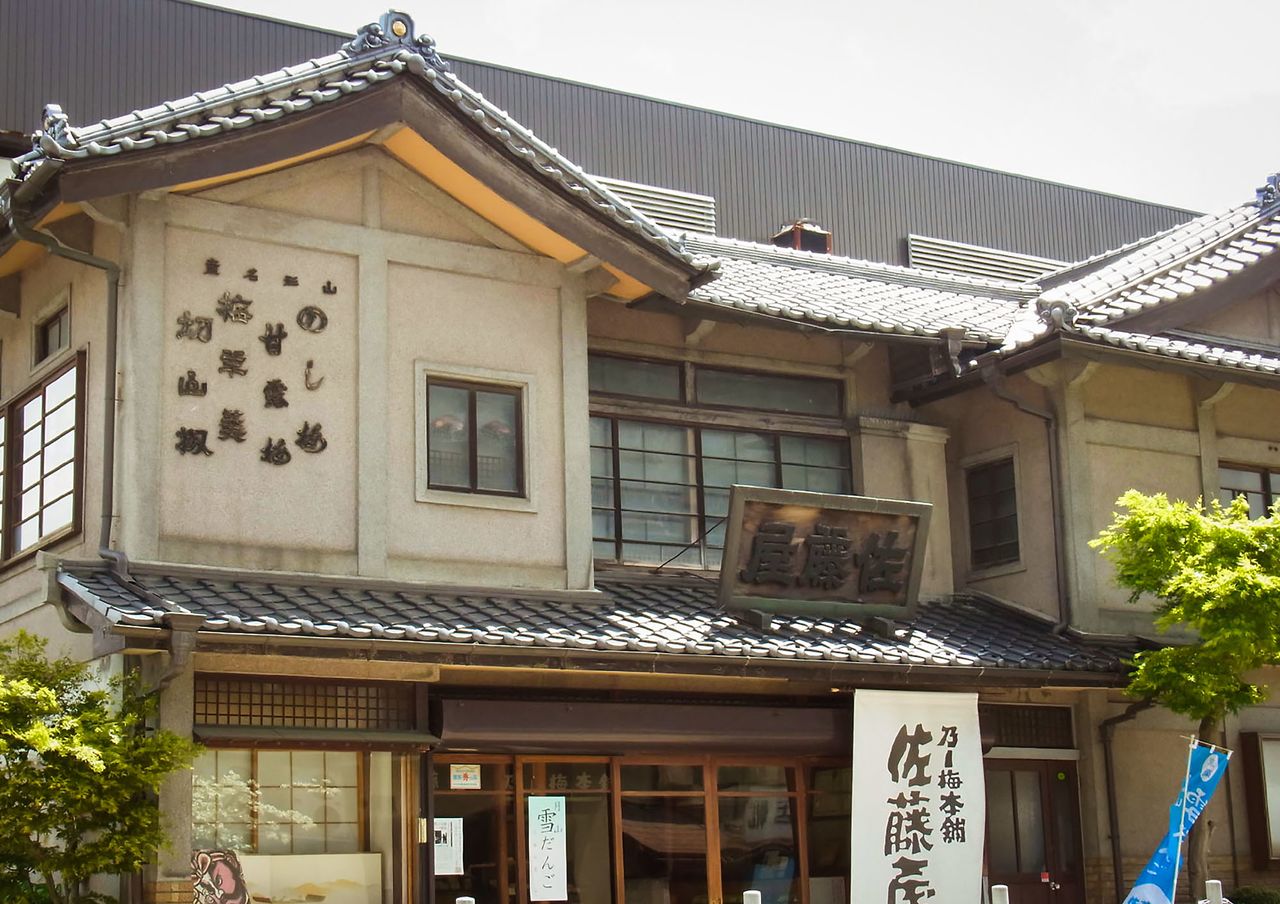
The main shop still stands in its original location. (© Noshiume Honpo Satōya)
The eighth generation owner Satō Shintarō says that he decided to rethink the treat to reflect twenty-first-century tastes. “It was starting to feel old fashioned,” he explains, “like something you ate at grandma’s house.” He began developing a variation he named Tamayura that pairs noshiume and chocolate to offer a new take on the traditional sweet and its generations of refinement.
One key inspiration was orangette, a confection of chocolate covered candied orange peels. Satō saw the sour orange peel as an analog to noshiume, but covering the Japanese sweet in hot chocolate would melt it. He instead decided to layer the noshiume on ganache. While the ganache, made with chocolate and butter or fresh cream, had lots of fat and a strong aftertaste, it made a poor match for noshiume. On top of this, ganache melts at room temperature, disqualifying it as a souvenir. Satō tried replacing the butter with shiroan, a sweet paste made from white beans. The result was a treat with rich cacao aroma and a mild aftertaste that did not melt easily.
Satō admits that he asked a chocolatier friend for help in making the ganache, but says the idea of adding shiroan was all his. “It came from my experience in making Japanese sweets.” Satōya’s motto has become “bringing more freedom to wagashi” as he continues to search for ways to break new ground.
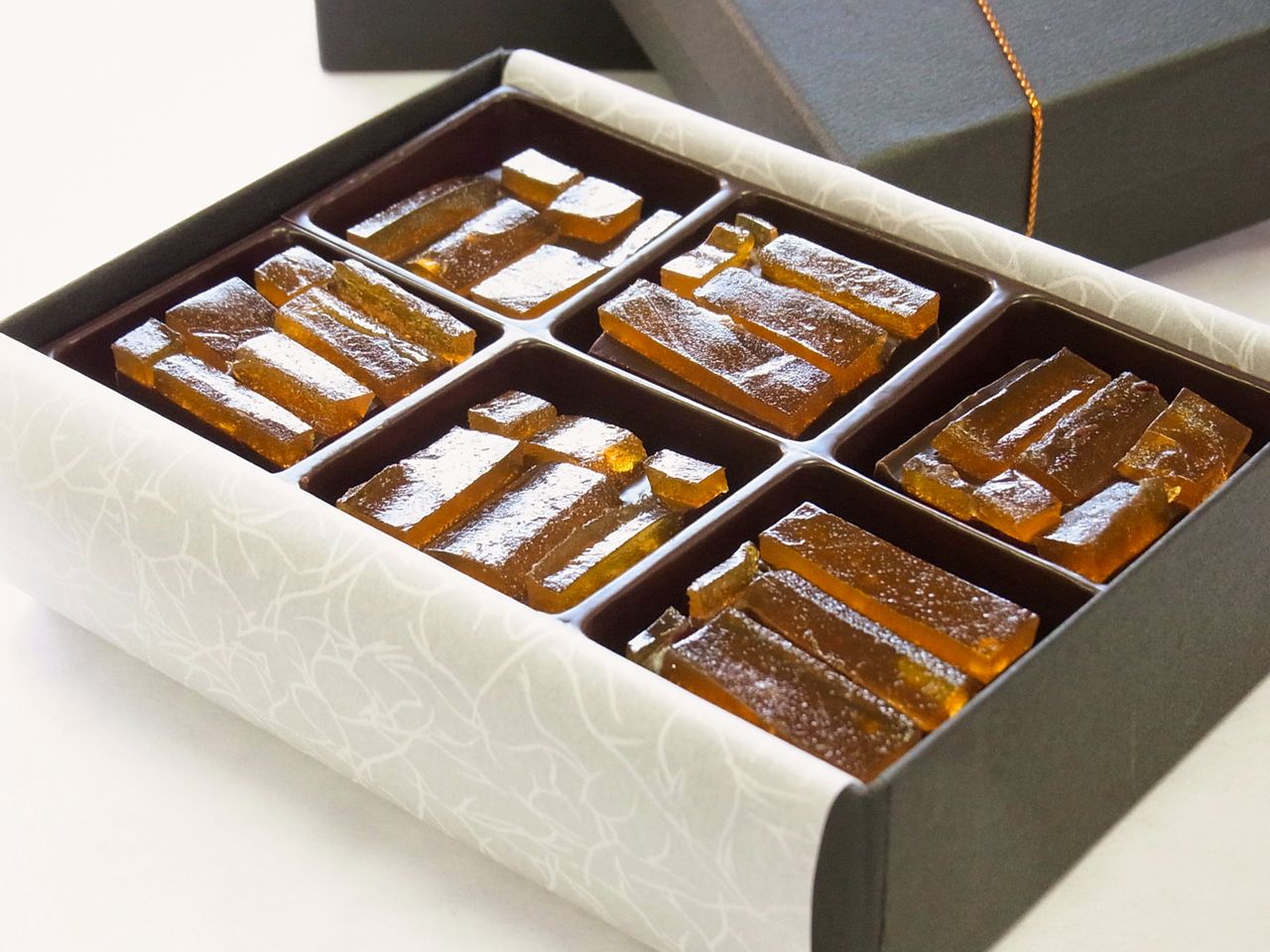
A box of six Noshiume Tamayura cost ¥1,080. (© Noshiume Honpo Satōya)
Noshiume Honpo Satōya
- Address: Tokamachi 3-10-36, Yamagata, Yamagata Prefecture
- Tel.: 023-622-3108
- Link (Japanese only): https://satoya-matsubei.com/
- Hours: 8:30 am–6:00 pm
- Located 10 minutes’ walk from JR Yamagata Station
Colorful Nanbu Senbei
Nanbu senbei is a style of cracker from northern Iwate Prefecture and the area around Hachinohe in Aomori Prefecture. Made with just salt, wheat flour, and water, they are baked thin in a special round mold until hard, crispy. The crunchy rings that form from the overflow around the mold is part of their unique character and charm. The crackers are mildly salty, and some include sesame or peanuts in the batter.
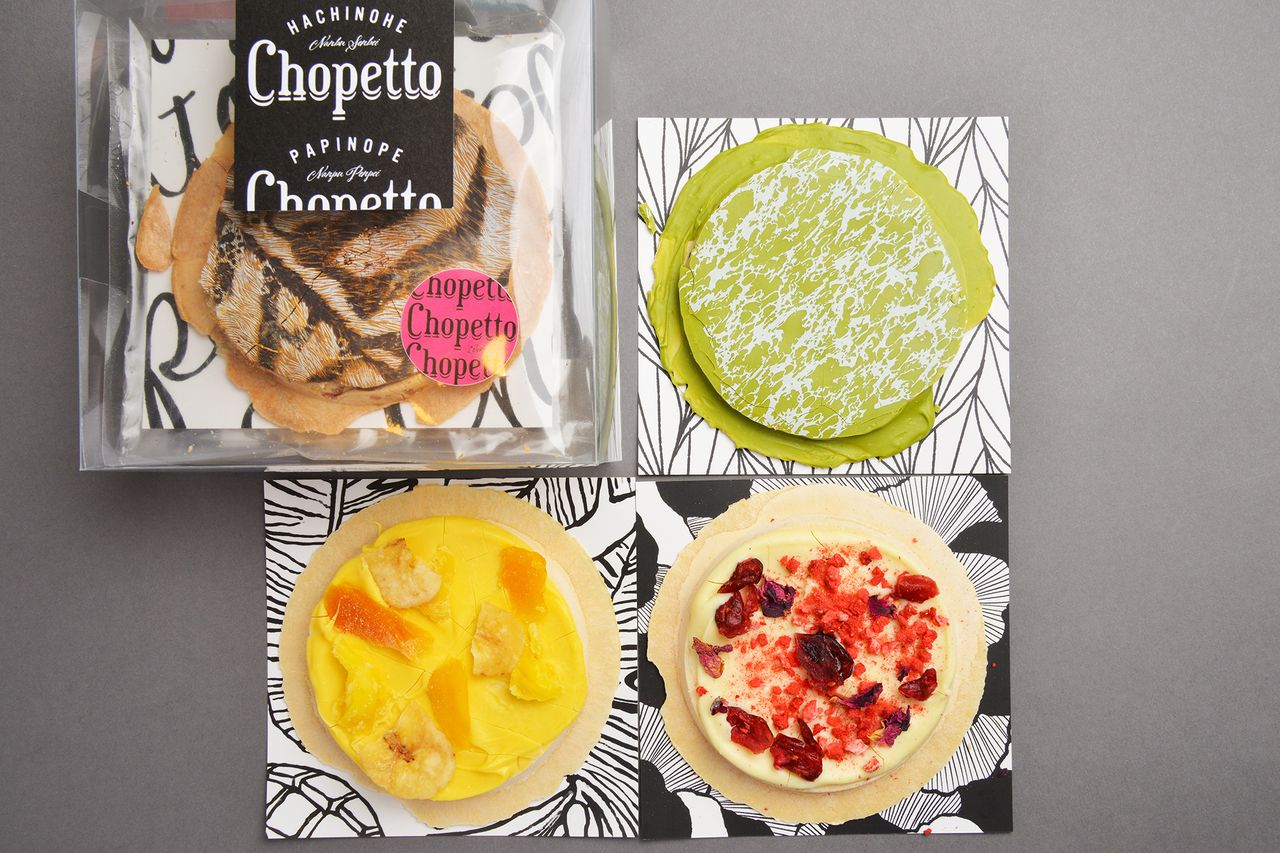
A box of five colorful Chopetto Nanbu Senbei cost ¥1,944, and a pack of three ¥1,350.
Chopetto are a colorful take on Nanbu senbei that are made to appeal and the eyes and palate. Ōtsuburai Risa, a lifestyle coordinator in Hachinohe, and local confectioner Manodo & Corte teamed up a Nanbu senbei shop to design the snacks. The crackers are topped with Belgian chocolate, nuts, dried fruits, and even dried rose petals, giving the traditional cracker a unique new appearance, flavor, aroma, and texture.
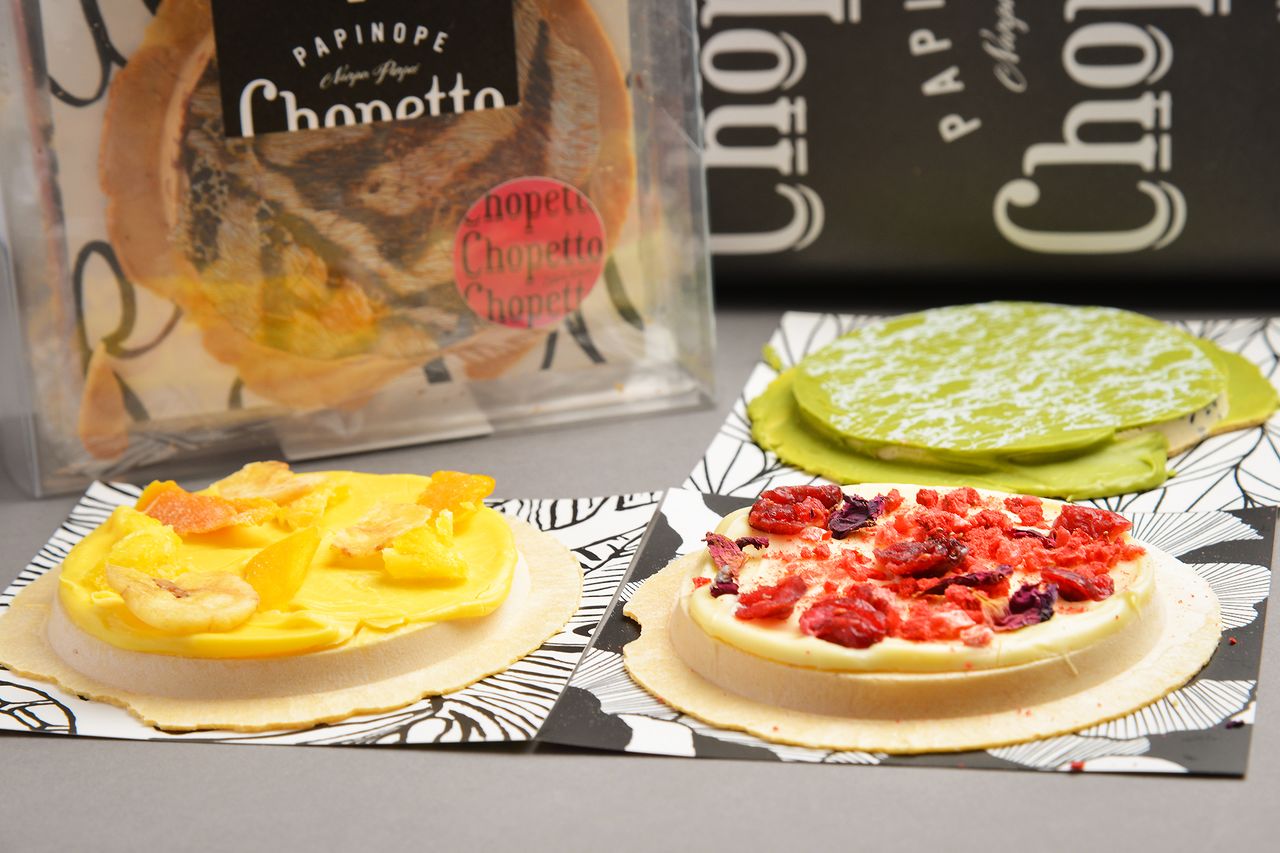
There are five varieties of crackers, including nut and milk, and rose and berry.
Hati style
- Address: 41-2 Nijūsannichimachi, Hachinohe, Aomori Prefecture
- Tel.: 0178-32-7892
- Link (Japanese only): https://hatitane.thebase.in/
- Hours: 1:00 pm–7:00 pm
- Located 16 minutes’ walk from Hon-Hachinohe Station
Traditional Sendai Sweets Made Modern
Date Masamune, who ruled the Sendai domain during the late sixteenth and early seventeenth centuries, was an avid practitioner of the Japanese tea ceremony, and his enthusiasm spread to the commoners of his castle town. Traditional Japanese tea is usually served with sweets of some kind, but confections made with white sugar, an expensive ingredient, were typically enjoyed only by the upper class. Sendai dagashi, made with government-provided dried food rations using rice or chestnuts, were reasonably priced tea sweets produced for commoners.
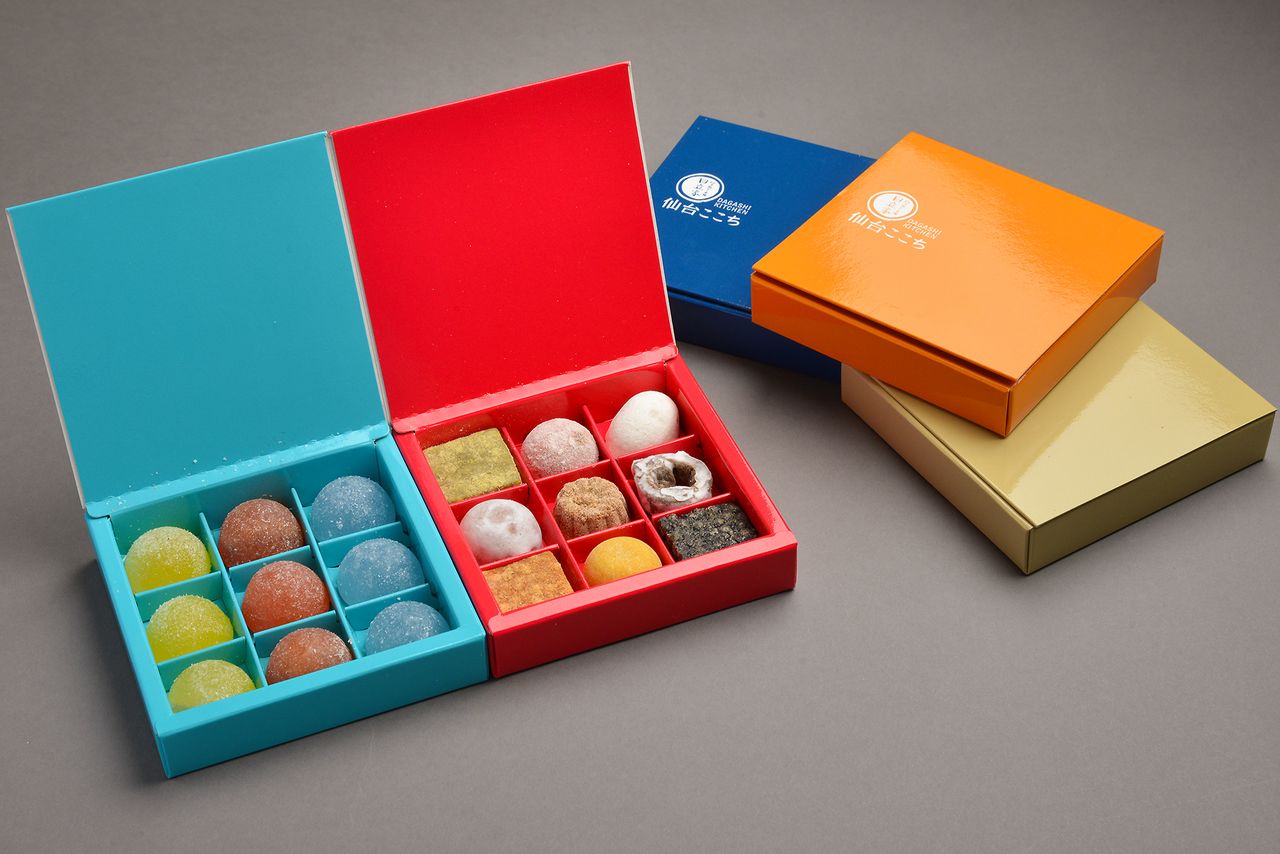
Seasonal boxes of Sendai Kokochi Kiyose are ¥750 each.
The confectioner Sendai Dagashi Honpo Hitachiya, founded in 1937, has rearranged traditional Sendai dagashi in a modern style, naming the result Sendai Kokochi. The shop’s boxed selection of sweets include bite-sized pieces of okoshi (puffed millet), balls of sweet bean paste, jellies flavored with tomato or yuzu (Japanese citron), and hardened squares of soybean flour.
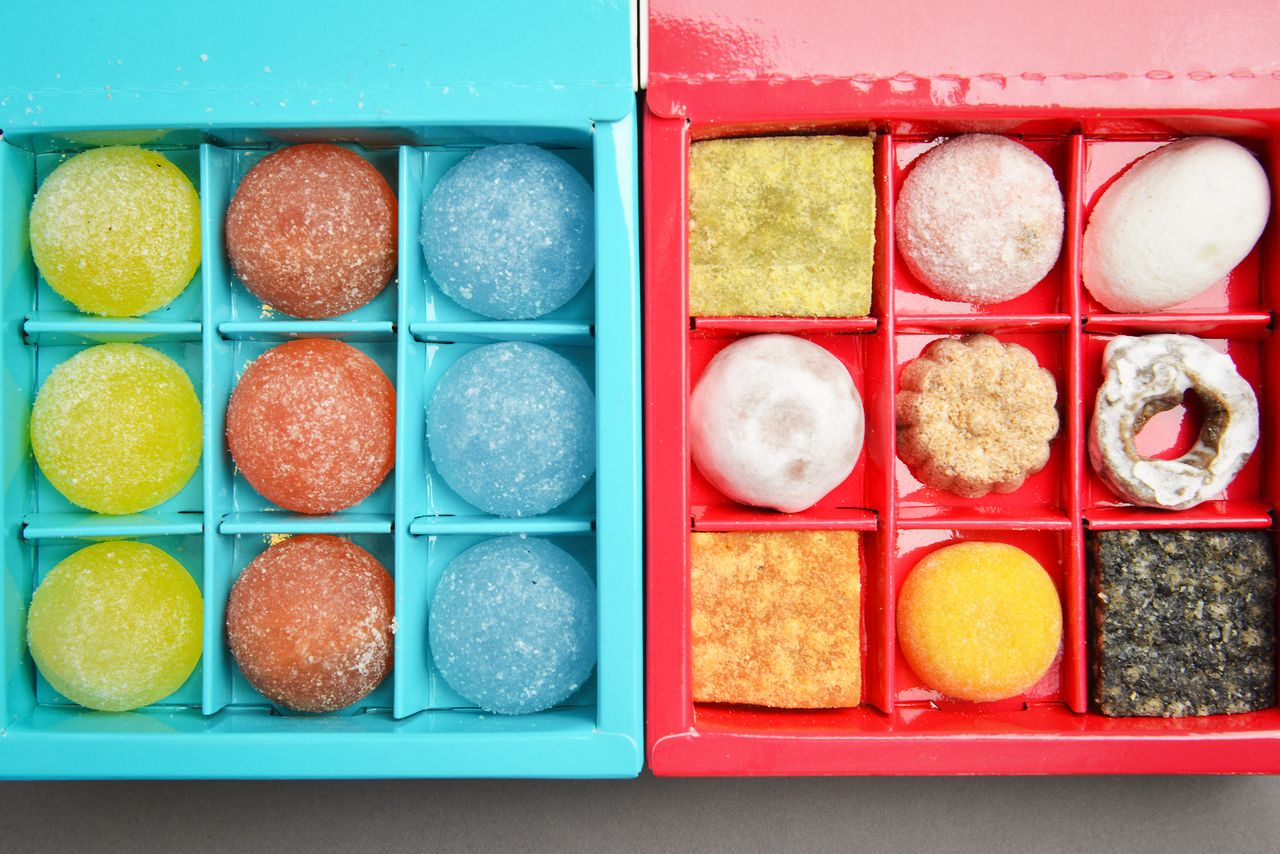
An assortment of balls of sweet bean paste and soy flour treats.
Sendai Dagashi Honpo Hitachiya
- Address: S-Pal Sendai Basement Level 1, Chūō 1-1-1, Aoba-ku, Sendai, Miyagi Prefecture
- Tel.: 022-267-4049
- Link (Japanese only): http://sendaidagashi.com/
- Hours: 10:00 am–8:00 pm
- Located a short walk from JR Sendai Station
(Originally published in Japanese. Reporting and text by Shoepress. Banner photo: Aizu Nagatoya Fly Me To The Moon Yōkan Fantasia. All photos by Shoepress unless otherwise noted.)